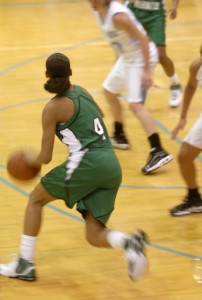Brian Schiff’s Blog
Injury Prevention, Sports Rehab & Performance Training Expert
I rehab far too many athletes under the age of 18 with ACL tears. In many cases, I am rehabbing some who have suffered multiple ACL ruptures before they graduate from high school. The burning question is why do so many clients suffer a graft failure or contralateral injury so so often?
Is it related to genetics? Is sports specialization to blame? Perhaps fatigue and limited recovery is a problem. I think the answer is multifactorial, but to be perfectly honest we as a profession have yet to truly arrive at a consensus as to when the “right time” to return to play is. Opinions vary widely based on the athlete, sport, native movement patterns, graft choice, additional injuries (ligament, cartilage or soft tissue) and the provider.
As a clinician dedicated to both prevention and the best rehab, I am always re-evlauating my own algorithm and rehab techniques, while looking for scientific rationale to direct my exercise selection and decision making processes. A recent paper by Webster and Feller in the November 2016 edition of AJSM looked at subsequent ACL injuries in subjects who underwent their primary ACLR under the age of 20 utilizing a hamstring autograft reconstruction procedure.
It is time to clear out some product inventory this year. To that end, I am offering a 50% off sale for one week only. This sale is on all physical products as well as e-books. I am also offering this discount on my printed version of the Ultimate Rotator Cuff Training Guide, of which I only have five remaining copies.
Simply enter code BFIT50 at checkout to save 50% on your entire order. Click Here to view all products.
This sale will end Monday July 18, so act now while supplies last.
As a sports medicine professional and physical therapist working with lots of athletes after ACL surgery, I am always looking for ways to improve post-op rehab and prevent a subsequent ACL injury. While we have lots of research looking at neuromuscular, genetic, sex and morphologic risk factors, we have not been able to make significant progress in injury reduction. So many athletes suffer the dreaded “pop” making a simple athletic maneuver they have done a thousand times before.
Based on nearly 19 years of experience training and rehabbing athletes from youth to professionals, I see strong links to a genetic predisposition (family history and prior injury) as well as concerns over neural fatigue. We already know the age of injury is a significant as research indicates those tearing at a younger age (around 20-21 y/o) are more likely to suffer a second injury. But what we know less about is the impact of ankle biomechanics (namely limited dorsiflexion) and how proximal weakness in the hip affects injury risk.
The latter topic was the focus of a study just published in the current edition of the American Journal of Sports Medicine. In this prospective study, researchers sought to determine if baseline hip strength can predict future non-contact ACL tears in athletes.
Why is it that athletes performing a movement they have done so many times suddenly tear their ACL? We have been studying ACL injury and prevention for many years now, and despite our best efforts, we have not made marked progress in preventing the number of ACL injuries. In addition to anatomical variants and perhaps some genetic predisposition, I feel that the earlier push for sports specialization in our society resulting in increased training/competition hours is a major factor.
The term ACL fatigue may or may not be familiar to you. But in essence, this theory would suggest that after a certain number of impacts/loading, the ACL becomes weakened and less resistant to strain. You could almost compare this to a pitcher who suffers an injury to his medial collateral ligament with too much throwing.
As someone who is consistently rehabbing athletes with ACL tears and screening athletes to assess injury risk, I am always interested in how we can keep people from suffering such a devastating non-contact injury. A recent article in the American Journal of Sports Medicine sought so assess ACL fatigue failure in relation to limited hip internal rotation with repeated pivot landings.
We already know that hip mobility is often an issue for our athletes. Researchers at the University of Michigan sought to determine the effect of limited range of femoral internal rotation, sex, femoral-ACL attachment angle, and tibial eminence volume on in vitro ACL fatigue life during repetitive simulated single leg pivot landings.
So many times, athletes and parents alike are singularly focused on the physical rehab necessary after an injury. Often, what the athlete is not talking about is the psychological impact of the injury. Suddenly, their identity and self worth may come into question. They feel disconnected from teammates and coaches. Their daily routine consists of rehab and not practice/play. Deep inside their head they are quietly wondering, “Will I ever be the same again?”
Aside from some of the obvious questions that race through an injured athlete’s mind, one of the biggest and most often unspoken concerns is the fear of re-injury. Having worked with athletes of all sports, ages and abilities, I have seen firsthand how important it is for an athlete to go through a functional and sequential progression that assures that they are able to run, jump, cut, pivot and decelerate again without pain or instability.
I have worked with hundreds of athletes over the course of my career that have suffered ACL injuries. The longer I practice, the more I become convinced that we probably have been pushing or allowing these athletes to go back to their sports before they are really ready (physically and/or mentally). Six months has long been the benchmark for most orthopaedic surgeons. The graft is well healed, but often the mind and body are not really ready.
While I have seen athletes who have great strength, stability, hop testing scores above 90% and look good on movement drills, sometimes these same athletes still have asymmetrical squat patterns, FMS scores lower than 14 or apprehension about returning to their sport. In addition, fear of re-injury is a big factor that impacts confidence and readiness to return to activity.
Consider some of these facts about modifiable factors with return to sports after ACLR from the May/June 2015 Sports Health Journal:
- Motivation, confidence, self-efficacy, optimism and low fear are associated with a greater likelihood of returning to preinjury level after athletic injury and ACLR
- Lower fear of reinjury and greater pyschological readiness to return to sport favored returning to preinjury level after surgery
- Combinable data from 10 studies suggests that fear of reinjury, psychological readiness to return to sport and one’ subjective assessment of knee function were predictive of level of return to sport
- As many as 1 in 2 athletes who do not return to their preinjury level of sport report the main reason is fear of reinjury







